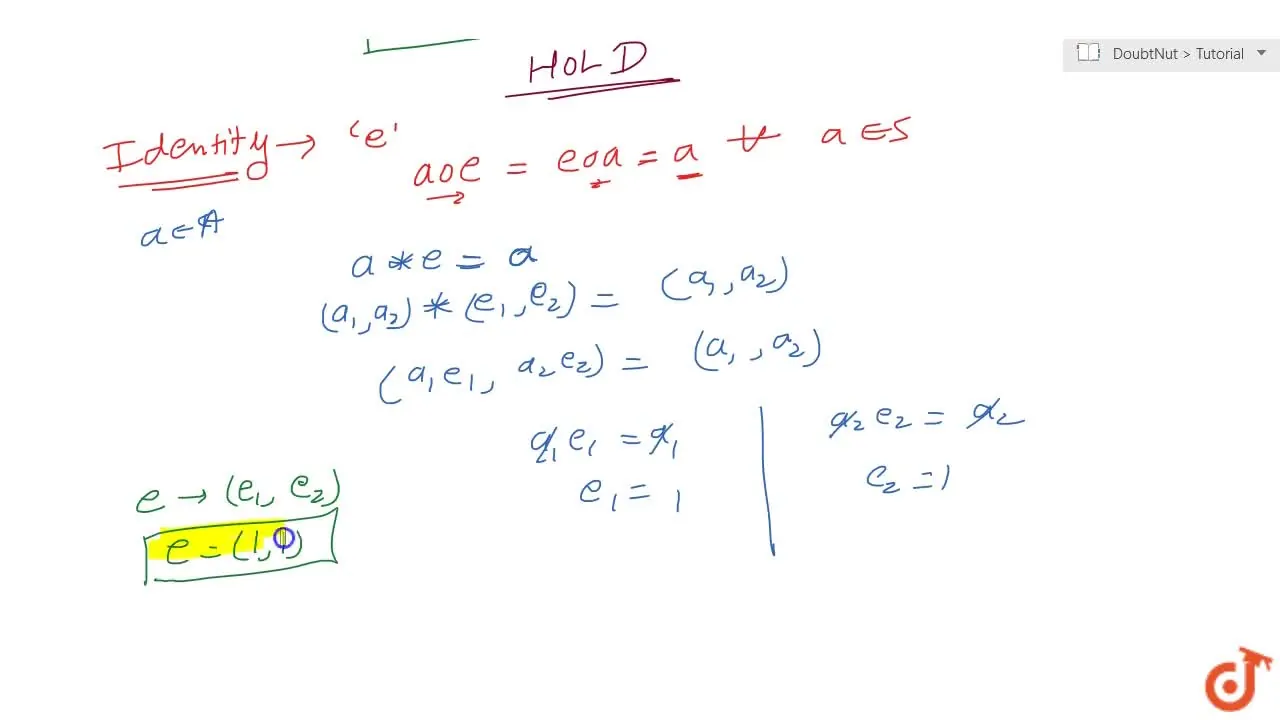Let denote the set of all non-zero real numbers and let . If * is a binary operation on defined by for all Show that * is both commutative and associative on (ii) Find the identity element in
i) Let ( and for all . Then,
Thus, is commutative on
Associativity:
Let and (e, f) A for all
Then,
((a, b) *(c, d)) *(e, f)=(a c, b d) *(e, f)
therefore(a, b) *((c, d) *(e, f))=((a, b) *(c, d)) *(e, f)
Thus, is associative on A
ii) Let be the inverse of for all .
Then
Thus, is the inverse of for
Related Playlists
Similar Questions
Let R0 denote the set of all non-zero real numbers and let A=R0×R0 . If * is a binary operation on A defined by (a, b)⋅(c, d)=(ac, bd) for all (a, b), (c, d)∈A. Show that * is both commutative and associative on A (ii) Find the identity element in A
View SolutionLet R0 denote the set of all non-zero real numbers and let A=R0×R0 . If * is a binary operation on A defined by (a, b)⋅(c, d)=(ac, bd) for all (a, b), (c, d)∈A. Find the invertible element in A .
View SolutionLet A=N×N , and let * be a binary operation on A defined by (a, b)⋅(c, d)=(ad+bc, bd) for all (a, b), (c, d)∈N×N. Show that: * is commutative on A. (ii) * is associative on A.
View SolutionLet A=NxNand′⋅' be a binaryoperation on A defined by (a,b)⋅(C,d)=(ac,bd) for all a,b,c,d,∈N. Show that '⋅' is commutative and associative binary operation on A.
View SolutionLet A=NxN, and let * be a binary operation on A defined by (a,b)⋅(c,d)=(ad+bc,bd) for all (a,b),c,d)∈NxN. Show that : '⋅' is commutative on A '⋅′ is associative onA A has no identity element.
View SolutionLet A=N∪{0}×N∪{0} and let * be a binary operation on A defined by (a, b)⋅(c, d)=(a+c, b+d) for all (a, b), (c, d)∈A. Show that * is commutative on A.
View SolutionLet A=N∪{0}×N∪{0} and let * be a binary operation on A defined by (a, b)⋅(c, d)=(a+c, b+d) for all (a, b), (c, d)∈A. Show that * is associative on A.
View SolutionLet A=N×N , and let * be a binary operation on A defined by (a, b)⋅(c, d)=(ad+bc, bd) for all (a, b), (c, d)∈N×N. Show that A has no identity element.
View SolutionLet * be a binary operation on Q−{−1} defined by a*b=a+b+ab for all a, b∈Q−{−1} . Then, Show that * is both commutative and associative on Q−{−1} . (ii) Find the identity element in Q−{−1}
View SolutionLet N be the set of all natural numbers and let R be a relation on N×N , defined by (a,b)R(c,d)⇔ad=bc for all (a,b),(c,d)∈N×N. . Show that R is an equivalence relation on N×N .
View Solution


